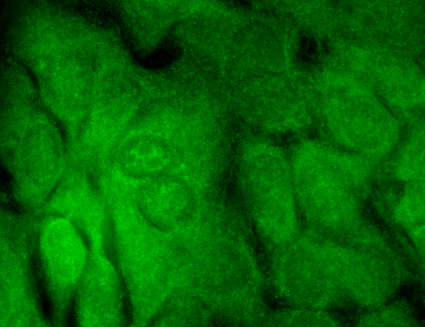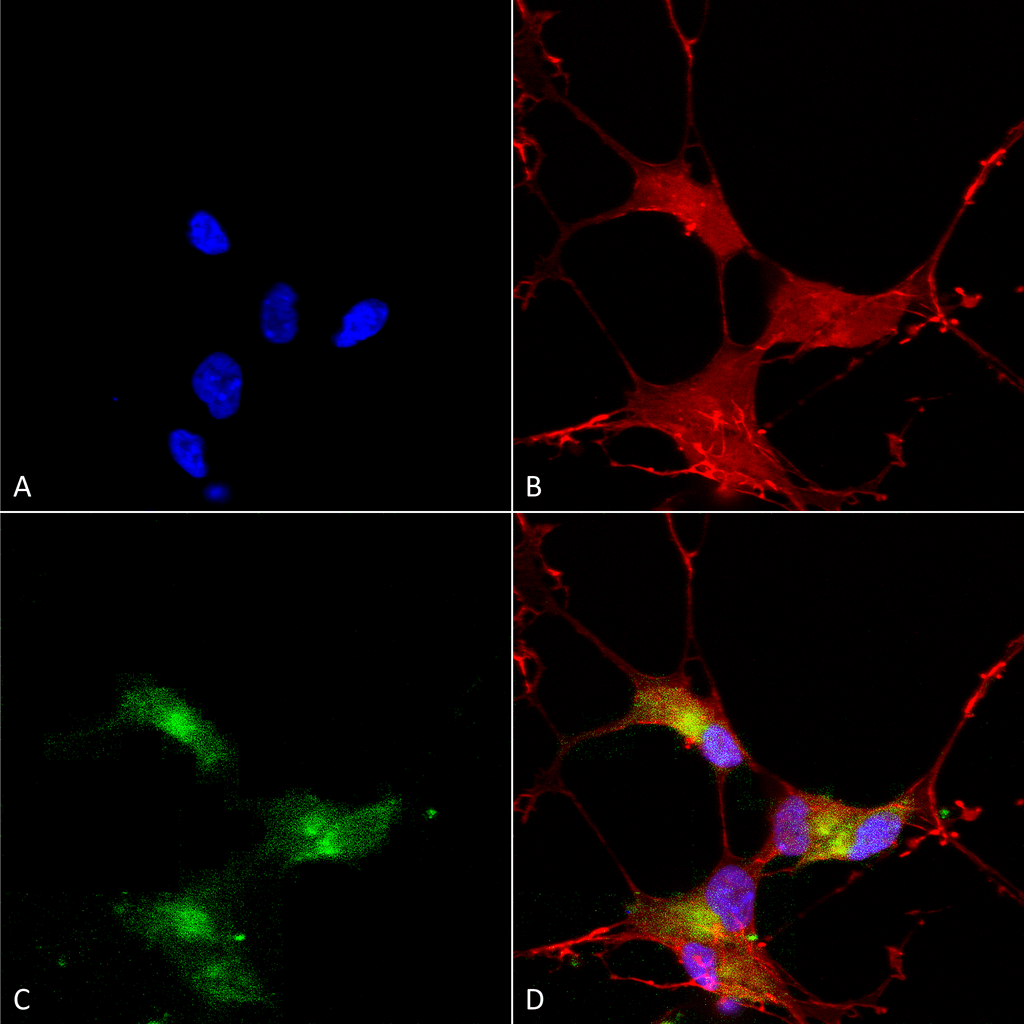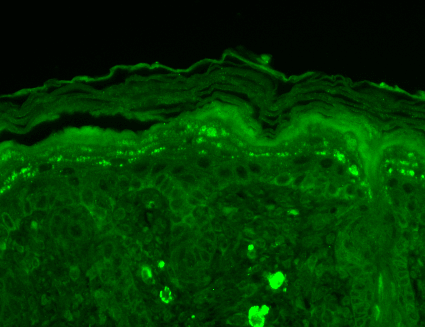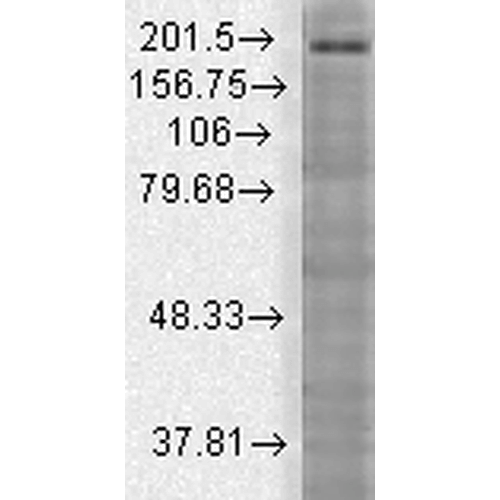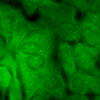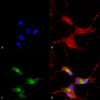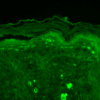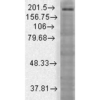Anti-Shank 3 Antibody (56463)
$466.00
| Host | Quantity | Applications | Species Reactivity | Data Sheet | |
|---|---|---|---|---|---|
| Mouse | 100ug | WB,IHC,ICC/IF,IP,AM | Human, Mouse, Rat |  |
SKU: 56463
Categories: Antibody Products, Neuroscience and Signal Transduction Antibodies, Products
Overview
Product Name Anti-Shank 3 Antibody (56463)
Description Anti-Shank3 Mouse Monoclonal Antibody
Target Shank 3
Species Reactivity Human, Mouse, Rat
Applications WB,IHC,ICC/IF,IP,AM
Host Mouse
Clonality Monoclonal
Clone ID S69-46
Isotype IgG2b
Immunogen Synthetic peptide corresponding to aa 840-857 (PEKLPGSLRKGIPRTKSV) of rat Shank3 (accession no. Q9JLU4).
Properties
Form Liquid
Concentration Lot Specific
Formulation PBS, pH 7.4; 50% glycerol, 0.09% sodium azide.
Buffer Formulation Phosphate Buffered Saline
Buffer pH pH 7.4
Buffer Anti-Microbial 0.09% Sodium Azide
Buffer Cryopreservative 50% Glycerol
Format Purified
Purification Purified by Protein G affinity chromatography
Specificity Information
Specificity This antibody recognizes human, mouse, and rat Shank3. It does not cross-react with Shank1 or Shank2.
Target Name SH3 and multiple ankyrin repeat domains protein 3
Target ID Shank 3
Uniprot ID Q9JLU4
Alternative Names Shank3, Proline-rich synapse-associated protein 2, ProSAP2, SPANK-2
Gene Name Shank3
Sequence Location Cytoplasm. Cell junction, synapse, postsynaptic density. Cell projection, dendritic spine. Note=In neuronal cells, extends into the region subjacent to the PSD.
Biological Function Major scaffold postsynaptic density protein which interacts with multiple proteins and complexes to orchestrate the dendritic spine and synapse formation, maturation and maintenance. Interconnects receptors of the postsynaptic membrane including NMDA-type and metabotropic glutamate receptors via complexes with GKAP/PSD-95 and HOMER, respectively, and the actin-based cytoskeleton. Plays a role in the structural and functional organization of the dendritic spine and synaptic junction through the interaction with Arp2/3 and WAVE1 complex as well as the promotion of the F-actin clusters. By way of this control of actin dynamics, participates in the regulation of developing neurons growth cone motility and the NMDA receptor-signaling. Also modulates GRIA1 exocytosis and GRM5/MGLUR5 expression and signaling to control the AMPA and metabotropic glutamate receptor-mediated synaptic transmission and plasticity. May be required at an early stage of synapse formation and be inhibited by IGF1 to promote synapse maturation. {PubMed:21606927, PubMed:21795692, PubMed:23100419, PubMed:23897824, PubMed:24089484}.
Research Areas Neuroscience
Background Shank proteins are a family of scaffold proteins identified through their interaction with a variety of membrane and cytoplasmic proteins. Shank proteins at postsynaptic sites of excitatory synapses play roles in signal transmission into the postsynaptic neuron. Shank proteins are crucial in receptor tyrosine kinase signaling; specifically, Shank3 can mediate Erk-MAPK and P13K signaling which is crucial for tubule formation. Shank 3 is also one of the latest genes to be associated with autism. A mutation in a single copy of Shank3 on chromosome 22q13 can result in communication disorders.
Application Images





Description Immunocytochemistry/Immunofluorescence analysis using Mouse Anti-SHANK3 Monoclonal Antibody, Clone S69-46 (56463). Tissue: HaCaT cells. Species: Human. Fixation: Cold 100% methanol for 10 minutes at -20°C. Primary Antibody: Mouse Anti-SHANK3 Monoclonal Antibody (56463) at 1:100 for 1 hour at RT. Secondary Antibody: FITC Goat Anti-Mouse (green) at 1:50 for 1 hour at RT. Localization: Borderline positive.

Description Immunocytochemistry/Immunofluorescence analysis using Mouse Anti-SHANK3 Monoclonal Antibody, Clone S69-46 (56463). Tissue: Neuroblastoma cells (SH-SY5Y). Species: Human. Fixation: 4% PFA for 15 min. Primary Antibody: Mouse Anti-SHANK3 Monoclonal Antibody (56463) at 1:50 for overnight at 4°C with slow rocking. Secondary Antibody: AlexaFluor 488 at 1:1000 for 1 hour at RT. Counterstain: Phalloidin-iFluor 647 (red) F-Actin stain; Hoechst (blue) nuclear stain at 1:800, 1.6mM for 20 min at RT. (A) Hoechst (blue) nuclear stain. (B) Phalloidin-iFluor 647 (red) F-Actin stain. (C) SHANK3 Antibody (D) Composite.

Description Immunohistochemistry analysis using Mouse Anti-SHANK3 Monoclonal Antibody, Clone S69-46 (56463). Tissue: backskin. Species: Mouse. Fixation: Bouin's Fixative and paraffin-embedded. Primary Antibody: Mouse Anti-SHANK3 Monoclonal Antibody (56463) at 1:100 for 1 hour at RT. Secondary Antibody: FITC Goat Anti-Mouse (green) at 1:50 for 1 hour at RT. Localization: Early stages of filaggrin-like and dermal staining.

Description Western Blot analysis of Rat brain membrane lysate showing detection of SHANK3 protein using Mouse Anti-SHANK3 Monoclonal Antibody, Clone S69-46 (56463). Load: 15 µg. Block: 1.5% BSA for 30 minutes at RT. Primary Antibody: Mouse Anti-SHANK3 Monoclonal Antibody (56463) at 1:1000 for 2 hours at RT. Secondary Antibody: Sheep Anti-Mouse IgG: HRP for 1 hour at RT.
Handling
Storage This antibody is stable for at least one (1) year at -20°C.
Dilution Instructions Dilute in PBS or medium that is identical to that used in the assay system.
Application Instructions Immunoblotting: use at 1-10ug/mL. A band of ~40kDa is detected.Immunohistochemistry and
Immunocytochemistry: use at 0.1-1ug/mL
Immunofluorescence: use at 1-10ug/mL
These are recommended concentrations. User should determine optimal concentrations for their application.
Positive control: Adult rat brain or lysate of COS cells transiently expressing Shank3.
Immunocytochemistry: use at 0.1-1ug/mL
Immunofluorescence: use at 1-10ug/mL
These are recommended concentrations. User should determine optimal concentrations for their application.
Positive control: Adult rat brain or lysate of COS cells transiently expressing Shank3.
References & Data Sheet
Data Sheet  Download PDF Data Sheet
Download PDF Data Sheet
 Download PDF Data Sheet
Download PDF Data Sheet

